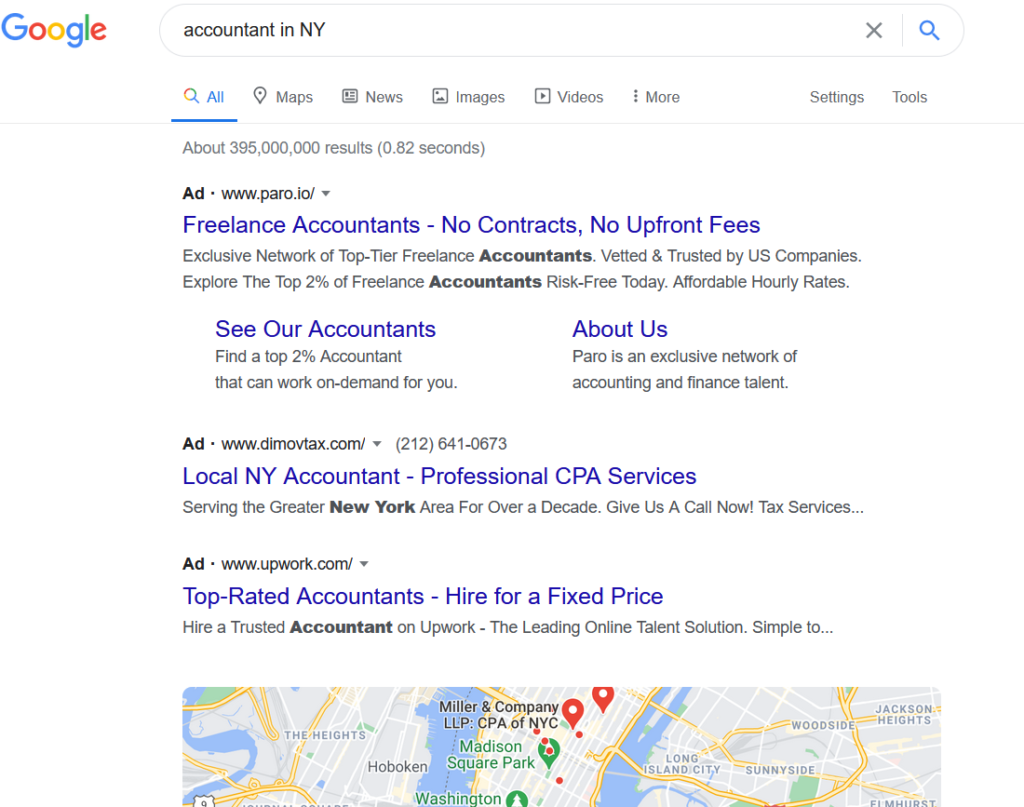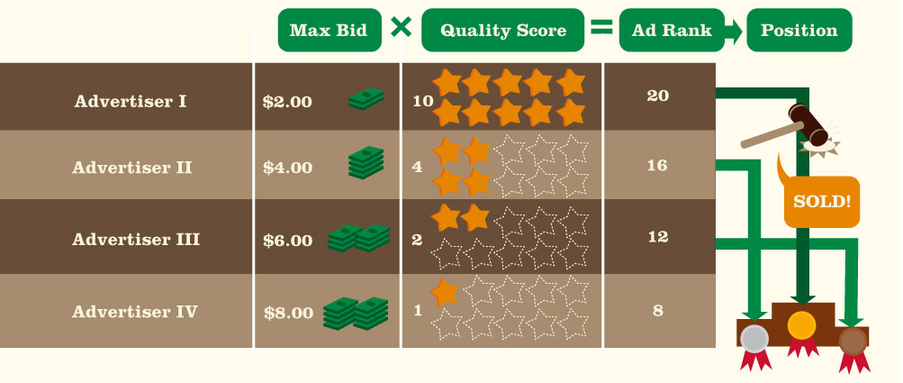
An Introduction to PPC: What It Is, Why It’s Important, and How to Approach
Confused about pay-per-click advertising? This introduction to PPC will help clear things up!
Here’s a question for you: Are you using PPC (pay-per-click) advertising to drive traffic and sales for your business? If not, you are in the minority, as nearly 75% of brands say that PPC is a huge driver for their business.
PPC advertising can be a game changer for your business and reward you with ongoing traffic, leads, and sales. But we’d be misleading you if we told you that you could get started immediately just by reading this or any other blog article.
PPC is not an easy marketing tactic to learn and grasp. That’s one of the reasons businesses wait so long to start advertising campaigns. It can take years of practice and ongoing training to master the nuances and keep up with the changing technology.
That said, we don’t want to deter you, as we have some good news: You don’t have to master PPC to launch ROI-boosting pay-per-click ads. You just need to know enough to work with the experts who can help you successfully launch the ads. And if you have some knowledge, you can even try a few ads yourself and work on your own campaigns to test it out.
After all, practice makes perfect…
In this introduction to PPC, we will walk you through the basics, explain how to approach this complex marketing discipline, and offer tips on best practices to get the highest ROI from your campaigns.
An Introduction to PPC: What Is It Exactly?
Every business owner should have a basic understanding of PPC, as most advertising platforms use this type of advertising setup because it can be quite lucrative. You don't have to become an expert, however. If you gain enough knowledge to understand the concepts and what drives ad success, you can make more informed marketing decisions about who you work with and be more in control of your ad spend and campaigns.
As mentioned previously, PPC stands for pay-per-click advertising, a paid advertising model where advertisers only pay when people click on their ads. So, for example, instead of a traditional advertising model where you pay for an ad to show in a location for a specific time, you would pay when someone clicks on it.
PPC advertising is common in search engines such as Google or Bing. Social media sites (e.g., Instagram, Facebook, Twitter) also allow PPC advertising, but we typically see more PPC ads on Google.
Google PPC ads show on the top of Google’s search pages. When you click on them, the advertiser pays a specific amount depending on campaign factors, which we’ll talk about later.

Understanding PPC: How Does It Work?
Have you ever been to an auction where each item goes to the highest bidder? Well, that’s like what happens when you run PPC ads on Google, except instead of goods, you bid on keywords.
PPC advertisers select the keywords (what people use to search in Google) on which they want to trigger their advertisements. For example, in the above image, the keyword those advertisers bid on was “accountant in NY.”
All you have to do is choose a keyword, and then Google will automatically show your advertisement on the first page of Google for that keyword, right?
If only it were that easy…
You see, you aren’t the only business that might want to trigger an advertisement for your chosen keywords. If it’s a good keyword that your audience would likely use to find you and buy from you, it’s almost guaranteed that thousands of other businesses in your industry (if not more) will be bidding on that keyword as well. And thousands of businesses can’t all grace the front page of Google.
So, how does Google choose which ads to place first or on the first page?
Google uses the Quality Score (among other factors), which measures the ad’s relevance, and your bid to place your ad.

The Quality Score is measured by your ad’s CTR (click-through rate) against the average CTR of ads in the same position in Google. This measurement tells Google how relevant your ads and landing page are. The more relevant, the higher your Quality Score, and the higher your ad's position in Google’s index.
There are three main components to Google PPC ads:
- Keywords
- Landing page (where your ad directs people to go)
- Ad copy
When all three are in perfect alignment, your ad campaigns will perform well. In a later section, we’ll share some best practices for selecting the best keywords and ensuring your ads are compelling and relevant enough to maximize clicks.
Why Is PPC Important?
Of course, this wouldn’t be a comprehensive introduction to PPC without explaining why it’s important…
Years ago, marketers could rise to the top of Google with some strategically placed keywords, some links, and a clever domain (without paying for ads). But Google has evolved, and it's no longer that easy to get on the infamous first page for high-competition keywords (if you ever do).
The practice of optimizing your website for users so you can get rewarded with higher search engine rankings is called search engine optimization (SEO). The issue with SEO is that it typically takes a long time, a lot of content creation, and significant outreach to get a decent amount of organic (non-paid) traffic, depending on the competition of your keywords.
Is SEO still viable? Yes, absolutely!
Oftentimes marketers use SEO as a long-term approach and run PPC ads at the same time to get some quick traffic or test out a new product or landing page. So, as you would imagine, one of the most significant benefits of PPC advertising is the ability to jump ahead of all of the organic website listings and get your website or landing page in front of a lot more people in a short period.
Something else to keep in mind is that Google’s redesigns have resulted in fewer organic search results in many cases. Because of this, we recommend taking a two-tiered approach when trying to rank for certain keywords: creating well-optimized content that speaks to your target audience, then running PPC ads for the same keywords.
How to Approach PPC: Start Here + Best Practices
PPC is a powerful marketing tactic—provided you know the nuances that produce successful campaigns. Let’s discuss vital best practices for getting a positive ROI and maximizing ad spend.
Strategic Keyword Research
The key to success with Google ads is to select the right keywords. So, what’s the first step? It’s not selecting keywords. If you head right to a keyword search without preliminary planning, your campaigns are headed down the drain.
Know Your Targets
You can’t choose the right keywords if you do not know (intimately) who will be clicking on your ads. And we don’t mean simply knowing that your target is a 20-something female. Before you can determine which keywords to use, you MUST know the language your target audience uses, their behaviors, their characteristics, and the things that make them tick.
You can’t skip this vital step!
If you haven’t done this type of market research on your target audience (and aren’t sure how), don’t worry. We’ve got a lot of information about this on our blog. We are obsessed with data here at Viral Solutions because it is the ONLY way to guarantee success with your marketing campaigns.
Here are some links to more information on market research:
- Market Orientation and Research – Part 1
- Market Orientation and Research – Part 2
- How to Do Market Research: A Guide for Beginners
Consistency from Keyword to Landing Page
Select keywords that closely align with your ad and your landing page. Think about it like a conversation. The keyword starts the conversation, the ad copy continues it, and the landing page finishes the conversation.
For example, if you were advertising your brown leather backpack for the modern-day office worker and selected the keyword “brown leather work backpack,” the ad should appeal to people who searched with this keyword. The ad copy should target the work professional looking for a brown leather backpack, not any other person, regardless of whether they would like the item.
The landing page should then be a page about the brown leather backpack, not a black leather backpack, or another page on your website. Make every page and piece of copy super relevant to the keyword—this will increase your Quality Score and your placement in the search engines. Consistency of message and target is critical.
Don’t Waste Ad Spend on Negative Keywords
In addition to sourcing traffic-boosting keywords that describe your product or service, look for negative keywords so you can tell Google when not to trigger your ad. Negative keywords do not adequately represent your offerings. If they trigger your ads, it can lead to the wrong people clicking on them, which results in wasted clicks and wasted money.
What’s a negative keyword? Let’s say you look up keywords related to your forest-inspired clothing line—every purchase of which allows you to plant a tree. One of the keywords you notice in your search list may be “forest green clothing,” but your clothes are not the color forest green. Therefore, if your ad triggers for the query “forest green clothing” and gets clicked on, it won’t result in a sale because of the lack of relevancy. So, you will have wasted money on the click.
Optimizing Ads and Landing Pages
We would never be able to go into enough detail here to give you the full picture of how to optimize your ads and landing pages because it could fill a dozen books! But since this is an introduction to PPC, we’ll provide an overview, giving you a foundation on which to build.
Ad Optimization
How do you ensure your ads are compelling enough to click on? Here are a few pointers:
- Spice up your offer: Ensure your offer is compelling. Think about discounts, benefits, and reasons why the searcher would click on this ad over the others.
- Speak directly to your target audience.
- Be specific: Use exact numbers and prices.
- Include a review in one ad iteration.
- Use the keyword you are bidding on in your ad copy, preferably in the ad headline.
- Include a strong CTA telling your user what to do (Buy Now, Click Here).
- Continue the conversation: Your ad copy should be relevant to your keyword and appeal to the person who used the search term that triggered your ad.
Landing Page Optimization
Does your landing page result in conversions? An increase in conversions not only yields a high ROI but also improves your Quality Score. If people click on your ad but do not convert, try these tips to optimize your page:
- Remove clutter: Your landing page should have a single, clear call to action. Don’t clutter your page with several calls to action and confuse users.
- Consistency: Have you continued the conversation with the user who just clicked on your ad? Is the tone, product, and messaging consistent?
- Is the offer you presented in your ad the same as the landing page?
- Is the landing page optimized for mobile?
Best Practices for Running Successful Campaigns
So, you’ve got your keywords, ad copy, and landing page. You start your ads. Now what? Here are some tips for maintaining and improving your campaigns over time.
Pause Underperformers
Successful PPC campaigns require constant monitoring and tweaking. One of the monitoring steps is reviewing keywords to check how they are performing. Pause the underperformers, but only if they have been running for longer than a few days and fit one of the following criteria:
- High impressions, low click-through rate – Your ad might be getting a lot of impressions, but if no one is clicking on it, it can damage your Quality Score.
- Not enough traffic – You may be bidding enough to be competitive, but you still aren’t getting expected traffic. Your keyword may have too little search volume.
- Low bid – If your bids are below the estimate for your keyword for top-of-the-page rankings, you will not get the placement you need to score the traffic.
Adjust Your Bids
Bid adjustments are probably one of the most complicated aspects of running a PPC campaign, but they are integral to maximizing ad spend. Monitor your campaigns and notice when it makes sense to adjust your bids higher or lower depending on your users’ behavior. For example, if you notice a keyword performing better on mobile, decrease your desktop bid.
A/B Test New Ads
The “throw everything at the wall and see what sticks” approach rarely works in any marketing scenario. It’s no different with PPC advertising. You think you are saving time by getting campaigns started, but you end up with less budget and nothing to show for it.
A/B testing is critical to maximizing ad spend, but it will take a little more time to set up. Split test two variations with a small test budget by altering variations of your headline, keywords, landing page, and ad description. Change one element at a time until you find your top performers. Then, dedicate the rest of your budget to the winning ad.
Understanding PPC: What You Need to Know
You’ve reached the end of this introduction to PPC advertising. And by now you should have a better understanding of what it is, why it is effective, and how to maximize your ad spend while monitoring campaigns.
PPC advertising is a fierce weapon in the hands of skilled people who know how to get every dollar working as hard as possible. Our expert PPC advertisers are well versed in managing ads and maximizing ad spend. If you want to find out what’s working and what’s not, request a FREE audit today!

